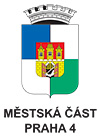
2017
Agnes Blaha: Vojtěch Birnbaum and the New Vienna School of Art History
In 1931, Austrian art historian Hans Sedlmayr published a manifesto called "Toward a Rigorous Study of Art,” in which he promoted a return to the core values of Alois Riegl’s methodology as the sole way to ensure scientific progress in art history. In the same year, he and his colleague Otto Pächt founded the “Kunstwissenschaftliche Forschungen,”a journal dedicated to the international dissemination and promotion of their new brand of research. They insisted on the close reading of artworks as the only valid starting point for any analysis, and vehemently rejected the use of fixed theoretical systems. Together with a small number of contributors to their journal, Sedlmayr and Pächt thus laid the foundation for what became to be known as the New, or Second, Vienna School of art history.
Although Vojtěch Birnbaum had no formal affiliation with the core members of the New Vienna School or with their newly established research journal, he shared some of their biographical background due to his studies with Alois Riegl in Vienna. Furthermore, there is a striking parallel between his reliance on Heinrich Wölfflin’s and Riegl’s theories on the history of architecture and the attempts of his contemporaries in Vienna to establish Riegl’s work as a standard for research in art history. In spite of all similarities, one important difference remains: While Sedlmayr and Pächt claimed to seamlessly continue the work of their famous predecessors, Birnbaum was reluctant to acknowledge the origins of his theories.
Arguably, both of these extremes can be attributed to political concerns. Birnbaum, who was already criticized by outspoken nationalists for being too “Germanic,” was probably wise not to draw any further attention to his affiliation with his alma mater. Meanwhile, the scholars in Vienna had a vivid interest in promoting Riegl’s tradition over the approach of his rival Josef Strzygowski, as the split of their institute into two independent (and more often than not hostile) chairs would only be mended after Strzygowski’s retirement in 1933.
Agnes Blaha received a doctoral degree in art history from the University of Vienna with a thesis on the historiography of 20th century Cézanne research. Current projects include research into the communities and collaboration practices of contemporary, self-publishing book artists (funded by the Austrian Research Agency FWF, and hosted by RIAT - Research Institute for Arts and Technology) and preparations for an edited edition on the ways in which photography shaped the development of art history during the first half of the 20th century that will be published with Routledge.






